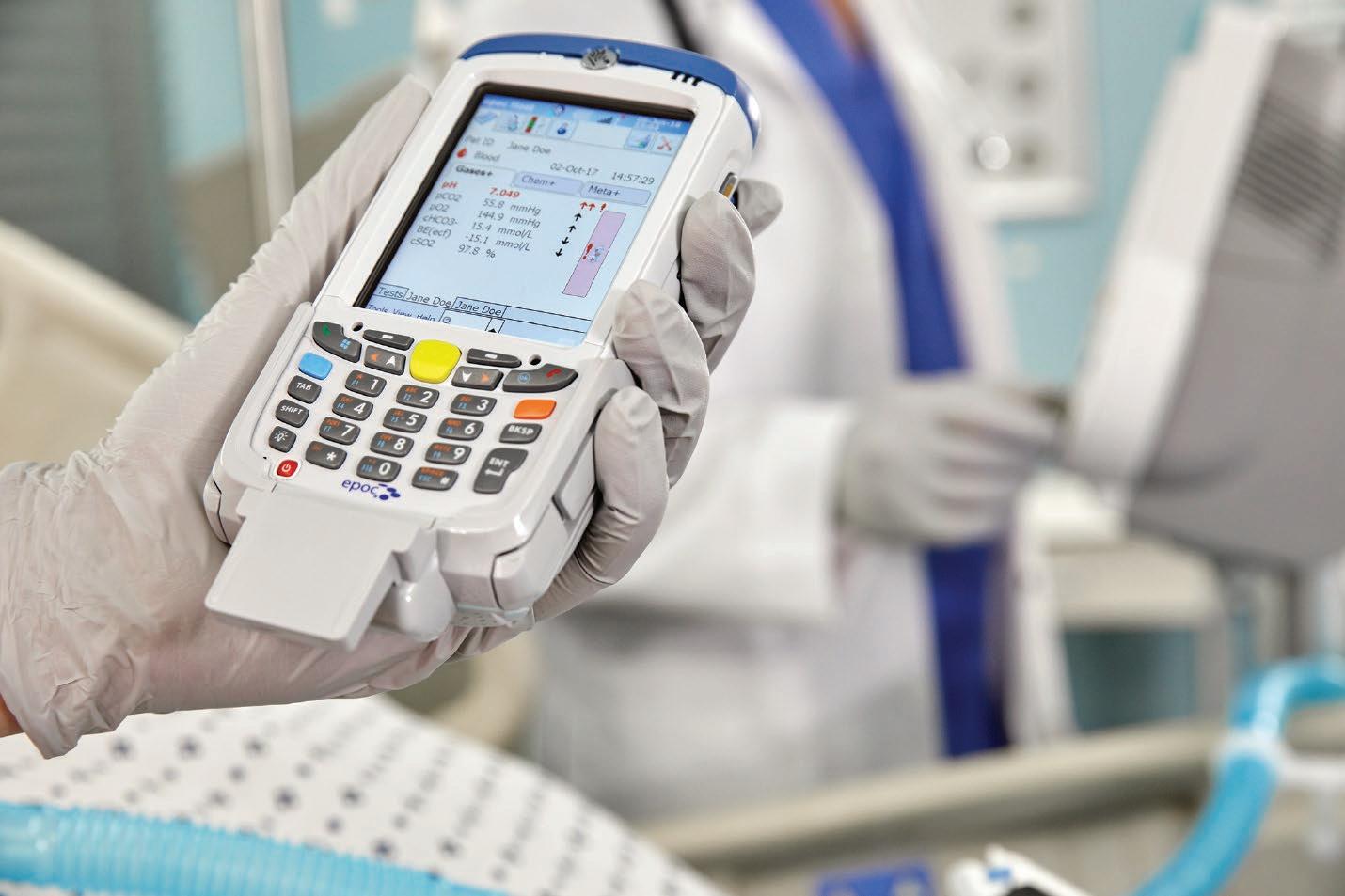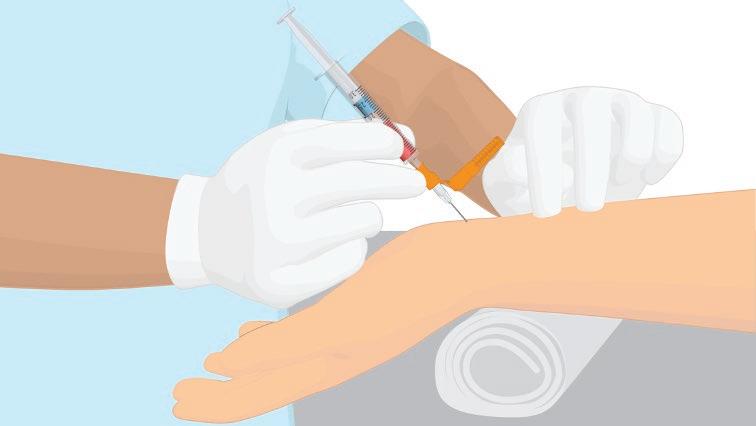IMPROVING THE DIAGNOSIS AND MONITORING OF CRITICALLY ILL PATIENTS AND THE ROLE OF BLOOD GAS TESTING
Blood Gas Analysis: Applications for Decentralized Testing Sophie Laurenson, BSc. BSc. (Hons.), PhD. (Cantab), EMBA, MRSNZ Blood gas analysis measures the levels of pH, oxygen, carbon dioxide, and bicarbonate in circulation. These assays are used to evaluate abnormalities in the degree of pulmonary gas exchange and metabolism and are used in the evaluation of numerous clinical indications.
Introduction
The levels of gases, electrolytes, and metabolites in circulation influence the equilibrium between oxygen delivery and tissue demand, as well as the acidbase balance of the human body
The interplay between the cardiovascular and respiratory systems is critical in maintaining homeostasis. The levels of gases, electrolytes, and metabolites in circulation influence the equilibrium between oxygen delivery and tissue demand, as well as the acid-base balance of the human body. Deviations in this equilibrium manifest in numerous diseases affecting the respiratory, cardiovascular, and metabolic systems. Blood gas analysis enables healthcare professionals to evaluate patients across a range of clinical settings, allowing improved clinical decision-making.
The Physiology and Pathology of Gas Exchange The lungs play a critical role in gas exchange by mediating the exchange of gases between air and blood through passive diffusion16. However, the lungs constitute only one component of a broader system, including the cardiovascular system (the heart, vasculature, and blood) and metabolic organs. The processes of ventilation and perfusion rely on harmony between each of the components of the cardiorespiratory system. Many cardiopulmonary diseases are caused by disturbances in either ventilation or perfusion of the lung alveoli and are evaluated using blood gas analysis17.
Fundamentals of Blood Gas Analysis Blood gas analysis evaluates abnormalities in the degree of pulmonary gas exchange and metabolism, including the adequacy of ventilation, oxygenation, and acid-base status18. The values of carbon dioxide and oxygen are expressed as the partial pressure of carbon dioxide (PaCO2) and the partial pressure of oxygen (PaO2). 8 | WWW.HOSPITALREPORTS.EU
They are essential factors in the diagnosis and treatment of patients with pulmonary and other critical conditions. The pH and bicarbonate concentration assist in the diagnosis of renal and metabolic diseases. Many modern blood gas analyzers also test for electrolytes (Na+, K+, Cl-, Ca++) and metabolites such as glucose and lactate. Co-oximetry tests measure concentrations of hemoglobin species including oxygenated hemoglobin (oxyHb), deoxygenated hemoglobin (deoxyHb), carboxyhemoglobin (COHb), and methemoglobin (MetHb) to determine blood oxygen saturation. Blood gas analysis is used routinely in patient care throughout different levels of the health system. It is pivotal in initial evaluations of patients presenting with dyspnea or respiratory distress. Within lower levels of care, oxygenation status is often assessed using non-invasive techniques such as pulse oximetry or subcutaneous measurement of carbon dioxide19. Patients that progress to severe pulmonary diseases such as acute respiratory distress syndrome (ARDS), and respiratory failure require routine blood gas testing and monitoring20. Blood gas analysis is also used to diagnose other critical conditions such as sepsis and septic shock21, heart failure and cardiac arrest, and hypovolemic shock. Metabolic disorders such as diabetic ketoacidosis, renal tubular acidosis, and inborn errors of metabolism also cause abnormalities in blood gas values17. Interpreting blood gas analysis results can be challenging, as the factors affecting blood gas values are often multifactorial and complex22. There are five leading causes of hypoxemia, including ventilation/perfusion (VQ) mismatch, hypoventilation, reduced F iO 2, shunting, impaired diffusion of oxygen across the alveolar membrane23. Each of these mechanisms may contribute to deviations in oxygen and carbon







